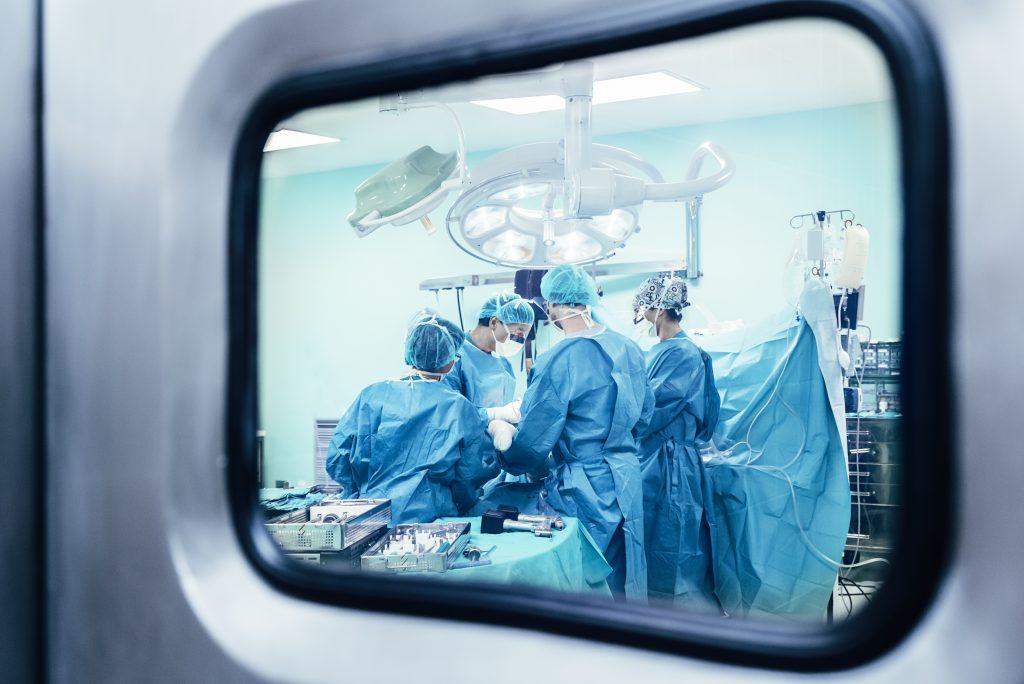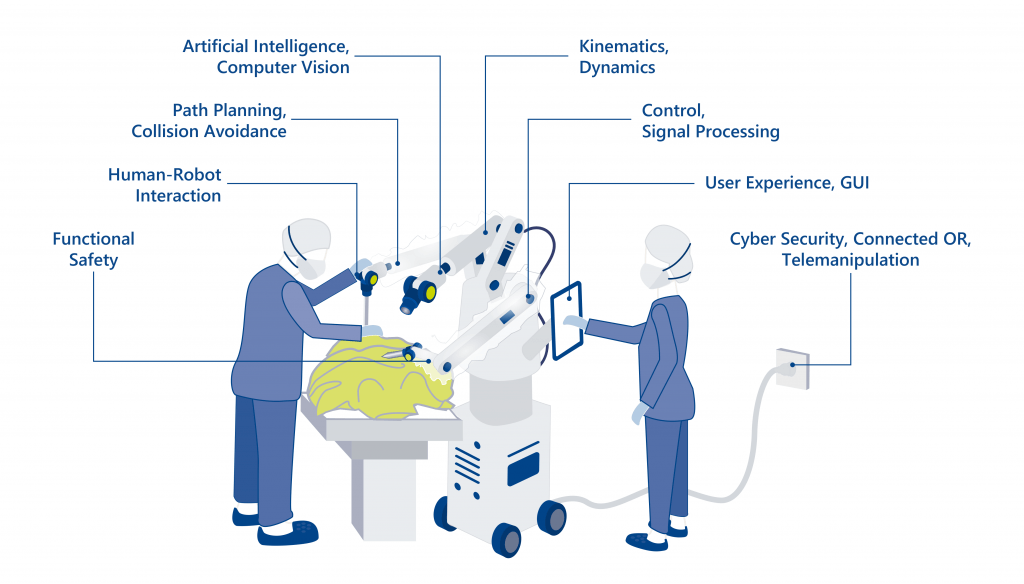Dr. Jürgen Prokop
Medical robotics
Working from an inceptive idea to the finished product, we develop intelligent robotic systems that support doctors, surgical teams, and nursing staff, and benefit patients.
The use of robotic systems in healthcare will continue to expand in the years ahead, paving the way for groundbreaking new opportunities in medical technology that will benefit both medical practitioners and patients. Besides the best-known example of a teleoperated robot system for minimally invasive surgery, there is a wide range of applications in fields such as diagnostic imaging, radiation therapy, rehabilitation, care, and hospital logistics.
All these systems are a very complex amalgam of methods and technologies such as kinematics, dynamics, control, and signal processing. This is the crossroads where mechanical, electronic, and software engineering meet.

Medical robots are certainly among the most challenging of medical devices to build. Featuring remarkably complex sensor-actuator systems that often move and work very close to the patient, these robots have to satisfy the most rigorous requirements for safety, risk management, and functional development.
Our interdisciplinary team of control engineers, software developers, system architects, and mechatronic engineers is here to develop safe and user-friendly robot assistance systems for you. With our deep insight into methods, specialized technology, and regulatory affairs, we are able to see the system as a whole and tackle complex development challenges. And our top priority is always patient and user safety.
